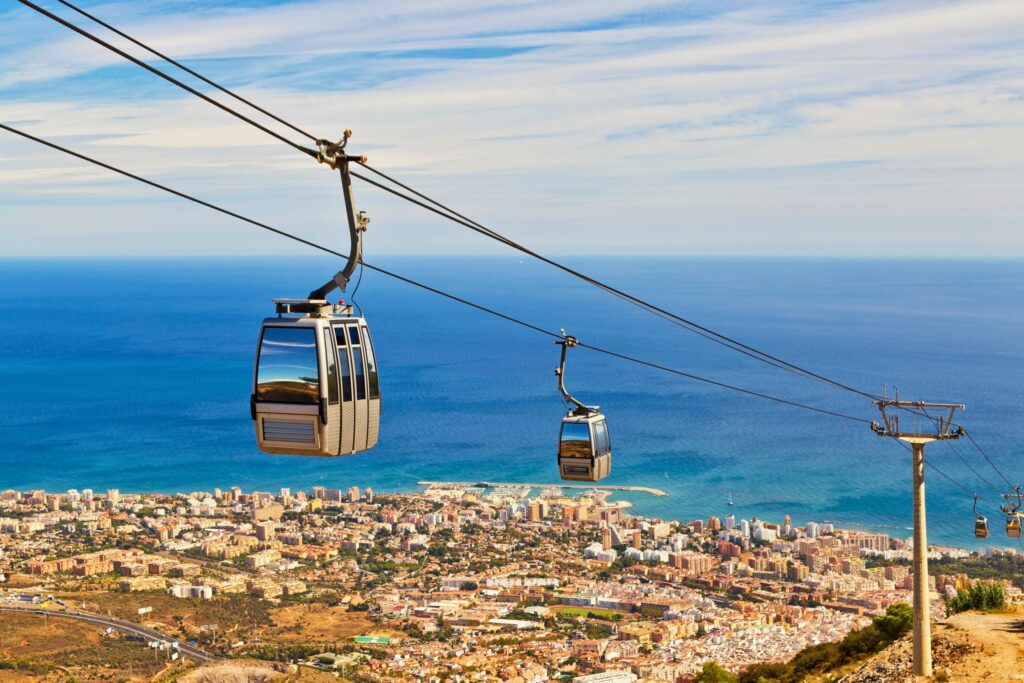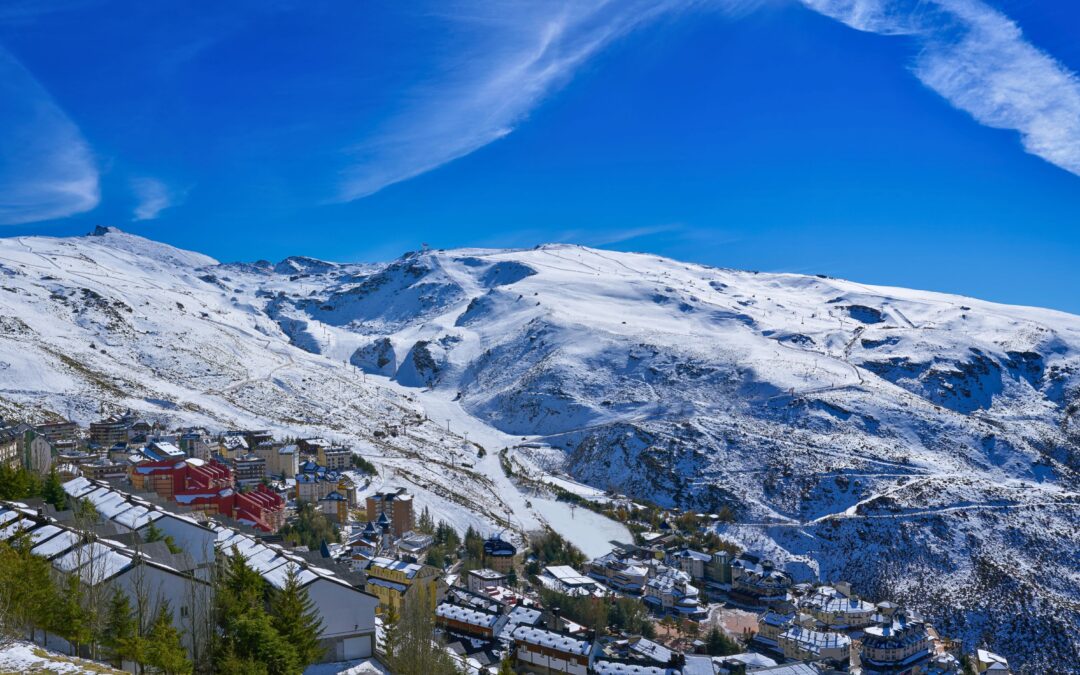Sierra Nevada is the southernmost ski resort in Europe and one of the highest, with its summit, Pico Veleta, reaching 3,398 metres. It’s located just 125 km (78 miles) from the Mediterranean coast. A typical drive from Marbella to the slopes takes just over two hours.
Here’s how it goes. You wake up to the hiss of a moka pot and a sky so blue it looks filtered. By mid-morning, you’re on a chairlift in the Sierra Nevada, boots clipped, cheeks tingling, carving arcs into untouched snow. By sunset, you're back on the terrace of your coastal home—Malaga perhaps, or further west in Estepona—grilling wild red prawns as the Med turns silver.
Yes, it sounds like lifestyle fiction. But it isn't. It's southern Spain in winter. And for those who live it, this improbable routine isn't excess. It's rhythm.
The Snow and the Sun
The Sierra Nevada ski resort, just over two hours from Marbella, offers the southernmost slopes in Europe. You can ski until April at 3,300 metres, then descend into dry air and lemon trees. According to Spain’s meteorological agency, AEMET, the Costa del Sol boasts over 320 days of sunshine each year. Even January plays nice: average highs of 17°C, lunch outdoors, and the sea winking at you like it's summer.
There are few places where you can move so seamlessly between contrasts: cold and warm, mountain and coast, adrenaline and repose. This duality isn't a footnote. It's the main story.
Where You Might Live
The Costa del Sol isn't a monolith. It's a patchwork of lives and landscapes, each with a property market to match.
In Marbella, wealth is worn lightly but layered deep. Up in Sierra Blanca or La Zagaleta, villas sit behind gates and under the eye of private security, all angular lines and sunken lounges. You're likely to find a Finnish sauna, indoor pool, and art you can't name on the walls. Buyers here tend to have portfolios, not just pensions.
Estepona is different. Less flash, more design-savvy. Think sea-facing penthouses with floor-to-ceiling glass and rooftop gardens. Many developments come with gym access, spas, and concierge services, often tailored for remote work lifestyles. You’ll find the 40-somethings here, zooming into meetings one hour, swimming laps the next.
Over in Sotogrande, it’s a different frequency. Golf dominates, yes—Valderrama and La Reserva are both here—but so do polo fields, sailing schools, and international education hubs. It’s quieter, less transactional. The houses are more elegant than ostentatious. You’ll see Range Rovers with sand on the floor mats.And then, Gaucín. Or Ronda. Places where Wi-Fi shares airspace with eagles. The houses are honest: thick walls, olive trees, maybe a vineyard. Bought by people who wanted space and silence, but didn’t want to be bored. Here, the winters are still and orange-scented. You sip sherry instead of networking.

On bright, cloudless days at the top of Sierra Nevada’s highest runs, skiers can see both the Mediterranean Sea and, sometimes, the Rif Mountains of Morocco. Winter BBQ culture is a real thing here too. Spanish-style “espeto” sardine skewers are grilled over open wood fires on the beaches of Malaga and Torremolinos all year round, yes, even in January.
The Winter You Could Have
Picture this. A Tuesday. You ski from 10:00 to 13:00, eat something fried and satisfying on the slopes, then head back to the coast with Spanish radio burbling through the car. At 16:00, you stop for grilled sardines on a beach near Nerja. Someone nearby is playing flamenco guitar. By 20:00, you're at home, decanting red wine, the embers warming your knees.
This isn't tourism. It's life.
Daily rhythms lean Mediterranean. Coffee is a ritual. Lunch, a ceremony. Offices are remote; commutes are sometimes a walk to the nearest café. Cultural offerings don’t pause in winter: the Picasso Museum in Malaga, the Pompidou outpost, flamenco festivals in backstreet theatres. This coast doesn’t hibernate. It hosts.
There are Michelin stars if you want them (“Sollo” in Fuengirola, “Skina” in Marbella), but equally you'll find family-run joints pouring wine from unlabelled bottles, serving oxtail and lentils without a trace of irony.
Why the Market Still Makes Sense
Let’s talk brass tacks. The Costa del Sol remains one of Europe’s most liveable regions, not just for its weather or food, but for its infrastructure. You’ve got year-round flights to every major European city. Strong healthcare—both public and private. International schools with solid reputations. And a legal system that, while occasionally sluggish, is stable and transparent.
As of Q2 2025, Marbella and Sotogrande property prices have climbed 5–7% year-on-year, according to Idealista and Knight Frank. Supply is tight, especially in high-demand areas. New builds often sell off-plan. International schools, year-round flights, and tax-efficient structures all help make the numbers work.
Buyers are advised to think structurally. Set up the right entity. Plan your inheritance tax. Use local counsel. But the bigger picture is stable: international demand, steady capital appreciation, and a lifestyle that’s not going out of fashion.
More Than a Gimmick
The point of this piece isn’t to say: look, you can ski and barbecue in the same day. The point is: what kind of life lets you do that, regularly, without stress? What sort of home allows you that range of choice? The Costa del Sol doesn’t ask you to choose between opposites. It hands them to you, daily.
Visit ultimate-lifestyles.com to browse properties that make this kind of winter your next normal.
• 📧 Email: [email protected]
• 📞 Phone: +34 951 12 07 12

